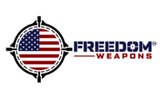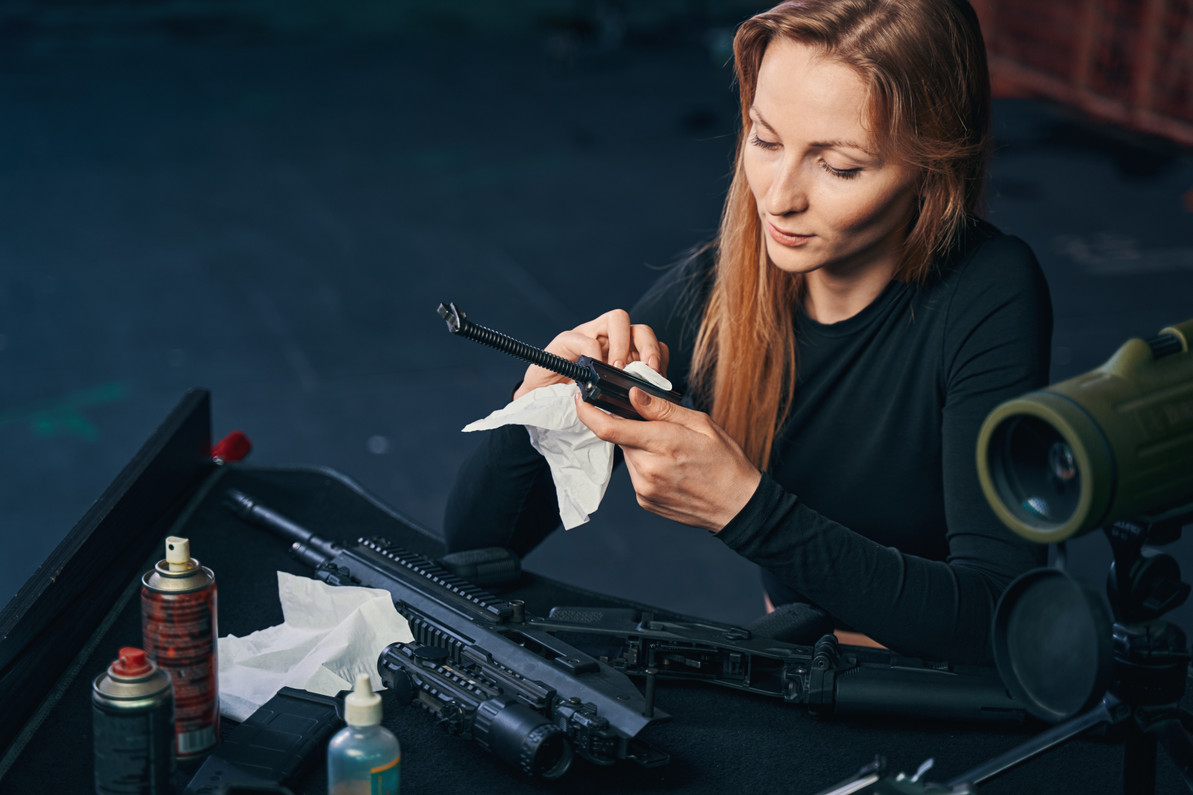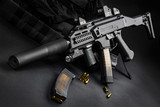How to Clean and Maintain Your Firearms: A Comprehensive Guide for Gun Owners
Introduction
Proper maintenance and cleaning are essential for the longevity, reliability, and safety of your firearms. Regular firearm cleaning not only enhances the performance but also prevents malfunctions caused by dirt, carbon buildup, or corrosion. Whether you're an experienced shooter or a first-time gun owner, understanding how to clean and maintain your firearm is critical for safe and effective shooting.
In this guide, we'll walk you through the entire process of firearm cleaning and maintenance. We'll discuss the tools you'll need, specific cleaning techniques for different firearm types, and tips for long-term storage. By the end, you'll have all the knowledge you need to keep your guns in top condition, ensuring safe and reliable operation for years to come.
1. Why Cleaning and Maintaining Your Firearm is Important
Cleaning and maintaining firearms is essential for various reasons:
- Reliability: A well-maintained firearm is more reliable. Over time, residue and carbon buildup can clog the internal components, potentially leading to jamming or misfiring.
- Accuracy: Proper cleaning of the barrel ensures that your firearm maintains consistent accuracy. Firing residue can accumulate in the barrel, affecting your shooting precision over time.
- Safety: A dirty firearm can become a safety hazard. Cleaning and maintaining your gun helps prevent malfunctions that can lead to accidents.
- Longevity: Regular maintenance protects your firearm from corrosion and wear, extending its life and preserving its value.
? Pro Tip: If you’re unsure about the proper cleaning techniques for a specific firearm model, always refer to the manufacturer’s instructions or seek advice from a certified gunsmith.
2. Essential Tools and Supplies for Firearm Cleaning
Before you start, gather the right tools and supplies. Here’s a list of items commonly used for firearm cleaning:
- Cleaning Kit: A comprehensive cleaning kit includes brushes, rods, jags, and patches that are essential for cleaning the barrel and internal components.
- Solvent: Firearm cleaning solvent helps dissolve carbon, lead, and copper buildup. Popular brands like Hoppes and Break-Free CLP are trusted in the firearms industry.
- Lubricant: Firearm lubricant or oil prevents corrosion and ensures smooth operation of moving parts. Rem Oil and Ballistol are industry favorites.
- Patches: Patches are small cotton squares that help wipe down the bore. Make sure to use the correct size for your firearm's caliber.
- Bore Snake: A bore snake is a convenient, reusable cleaning tool that can quickly clean the bore.
- Cloth or Rag: Use a microfiber cloth to wipe down the exterior of the firearm, removing fingerprints, dust, and excess oil.
- Cleaning Mat: A cleaning mat keeps your work area organized and prevents small parts from rolling away.
3. Step-by-Step Guide to Cleaning Your Firearm
Follow these steps for a thorough firearm cleaning:
Step 1: Safety First
- Unload Your Firearm: Always ensure the firearm is unloaded. Remove the magazine, open the action, and double-check that the chamber is empty.
- Disassemble the Firearm: Follow the manufacturer’s instructions to disassemble the firearm into its major components (e.g., barrel, slide, frame, and bolt).
- Work in a Well-Ventilated Area: Solvents and cleaning agents often contain chemicals. Work in a well-ventilated space to avoid inhaling fumes.
Step 2: Cleaning the Barrel
- Attach a Patch to the Cleaning Rod: Soak a patch in solvent and attach it to the cleaning rod.
- Run the Patch Through the Barrel: Insert the rod from the chamber end (if possible) and run it through the barrel, coating the inside with solvent.
- Use a Bore Brush: Attach a bore brush to the rod, and scrub the barrel back and forth to break up carbon buildup.
- Run Patches Until Clean: Run several patches through the barrel until they come out clean.
- Dry the Barrel: Use dry patches to remove any leftover solvent.
Step 3: Cleaning the Action and Frame
- Apply Solvent to the Action Components: Use a nylon brush or toothbrush to apply solvent to the action, trigger group, and other components that accumulate residue.
- Scrub and Wipe: Gently scrub the parts with a brush, then use a clean rag or patches to wipe away debris.
- Pay Attention to Small Parts: For semi-automatic pistols or rifles, pay attention to the slide, bolt, and extractor. These parts can trap dirt and carbon buildup.
Step 4: Lubrication
- Apply Lubricant Sparingly: Apply a small amount of lubricant to moving parts such as the slide rails, trigger group, and bolt.
- Use a Cloth to Spread the Oil: Use a microfiber cloth to evenly spread the oil and wipe away excess. Over-oiling can attract dust and debris.
Step 5: Reassemble and Inspect
- Reassemble the Firearm: Follow the manufacturer’s instructions to reassemble the firearm.
- Function Check: Perform a quick function check to ensure the firearm operates smoothly.
- Wipe the Exterior: Use a cloth to wipe down the exterior, removing fingerprints and adding a light coat of oil for corrosion protection.
Related Products: Explore our range of firearm cleaning kits and maintenance supplies at Freedom Weapons LLC.
4. Maintenance Tips for Different Types of Firearms
Different firearms require unique maintenance procedures. Here’s a quick guide on cleaning specific types of firearms:
Handguns
Handguns, especially semi-automatic pistols, are prone to carbon buildup in the slide and barrel. Focus on cleaning the slide, barrel, and magazine well. Always ensure that the recoil spring is well-lubricated.
Rifles
Rifles, especially those with long barrels, can be more challenging to clean. Use a bore snake for quick cleaning and a rod for thorough barrel maintenance. Clean the bolt and chamber area carefully, as these are prone to fouling.
Shotguns
Shotguns require regular cleaning, particularly in the chamber and barrel. Use a larger bore brush and rod to clean the barrel thoroughly. Remove the choke and clean it separately to ensure consistent performance.
Suppressors
If you own a suppressor, follow the manufacturer’s instructions for cleaning and maintenance. Most suppressors, like the SilencerCo Omega 300 or Hybrid 46M, can be disassembled for cleaning. Use solvent and a brush to remove carbon buildup from the baffles.
Discover Our Selection of Suppressors and Maintenance Tools at Freedom Weapons LLC. Shop now.
5. Long-Term Storage and Corrosion Prevention
Proper storage is essential for preserving your firearm. Here are some tips to keep your firearm in top condition:
- Store in a Gun Safe: Store firearms in a gun safe to prevent unauthorized access, and consider using a dehumidifier to control moisture levels.
- Use a Gun Sock or Case: A gun sock or padded case adds an extra layer of protection against dust and scratches.
- Apply Rust Preventative: For long-term storage, apply a rust-preventative solution to prevent corrosion. Focus on metal surfaces and exposed parts.
- Check Regularly: Even if you don't use your firearm regularly, inspect it periodically for rust or dirt.
Protect Your Firearms with Quality Storage Options from Freedom Weapons LLC. View our gun safes and cases.
6. Common Mistakes to Avoid in Firearm Cleaning
While firearm cleaning is essential, improper cleaning can cause more harm than good. Here are some common mistakes to avoid:
- Overusing Solvent: Too much solvent can damage the finish or seep into sensitive areas. Use it sparingly.
- Excessive Lubrication: Over-oiling can attract dust and grime. Apply a light coat only to moving parts.
- Not Cleaning the Magazine: The magazine can accumulate dirt and grit, leading to feeding issues. Clean it occasionally to ensure reliability.
- Ignoring the Bore: Always clean the bore after shooting. Even a single round can leave residue behind.
- Using Incompatible Tools: Use tools and cleaning supplies specifically designed for firearms. Avoid household items that may damage the gun’s finish.
7. When to Seek Professional Help
For some firearm maintenance tasks, seeking professional assistance is the safest option:
- Complex Disassembly: For intricate firearms, like those with specialized components, a gunsmith can safely disassemble and reassemble the firearm.
- Repairs and Adjustments: If your firearm has visible wear, rust, or functional issues, have it inspected by a professional.
- Annual Maintenance: Consider an annual checkup by a gunsmith, especially for firearms you use frequently.
Need Professional Advice? Contact Freedom Weapons LLC for Support on Firearm Maintenance. Contact Us
Conclusion
Keeping your firearms clean and well-maintained is essential for safety, reliability, and accuracy. By following this guide and investing in quality cleaning products, you’ll ensure that your firearms are always ready when you need them.
Whether you’re cleaning a **handKeeping your firearms clean and well-maintained is essential for safety, reliability, and accuracy. By following this guide and investing in quality cleaning products, you’ll ensure that your firearms are always ready when you need them.
Whether you’re cleaning a handgun, rifle, shotgun, or suppressor, proper maintenance and storage practices are key. For the best selection of firearm maintenance tools, cleaning kits, and accessories, check out Freedom Weapons LLC to keep your collection in optimal condition.
Recent Posts
-
Exploring Top Firearms and Accessories for Enthusiasts: Handguns, Tactical Rifles, and More
In the firearms industry, there’s a wide variety of choices for every enthusiast, from high-capacity …Oct 28th 2024 -
How to Clean and Maintain Your Firearms: A Comprehensive Guide for Gun Owners
IntroductionProper maintenance and cleaning are essential for the longevity, reliability, and safety …Oct 25th 2024 -
How to Choose the Right Suppressor for Your Firearm: A Guide to Maximizing Performance and Comfort
When selecting the perfect suppressor for your firearm, it’s crucial to understand the various featu …Oct 7th 2024




